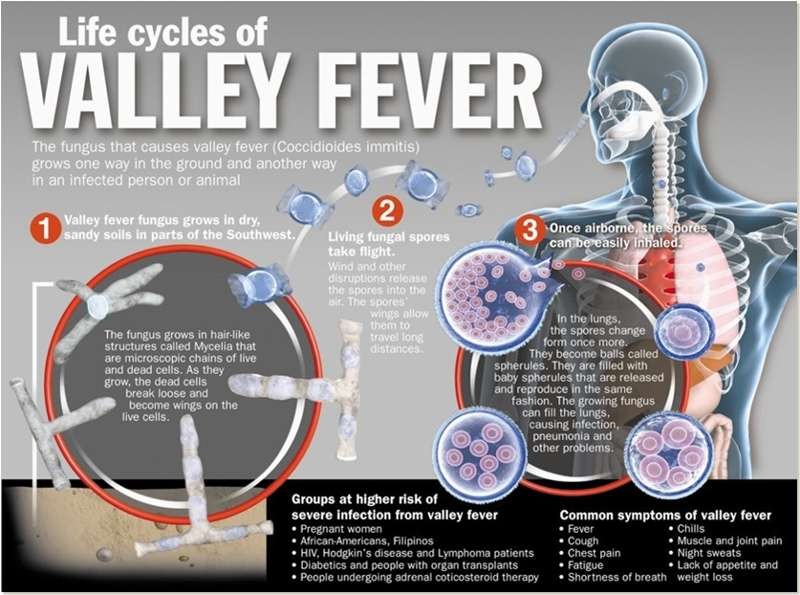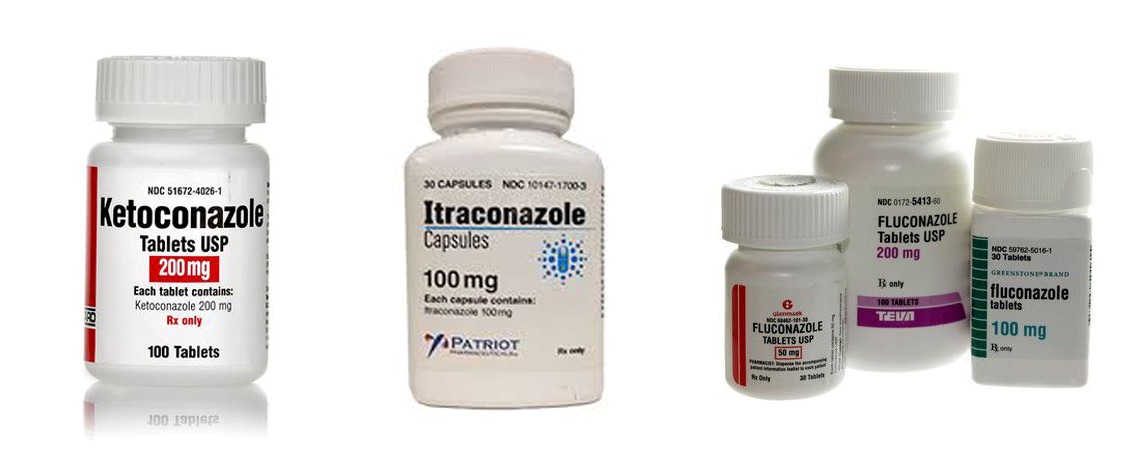
When our dogs get sick, we worry so much like as if they’re our kids too. They are a huge part of our family which is why we are always very interested about anything that would be related to our dog’s health. Among the diseases that we always watch out for are the diseases that we can’t really prevent. An example of which would be the Valley fever in dogs. Valley fever not only affects our dogs but can also affect us too, but CDC shows that it has a very low prevalence. That means this is more dangerous for your dog’s health than yours.
So, how serious is this disease anyway and what can we do about it? Is it even treatable? What are the causes? Can we prevent it? Let’s learn all about the basics of the Valley Fever.
It comes from the soil of the southwestern parts of the US.

Fungi are mostly found in soil. This particular fungi is very common in the deserts of Arizona, California, the arid portions of Texas, and the northern parts of Mexico due to fungi’s preference of the area’s temperature.
It is caused by a fungus!

Now you might just say that “oh are they caused by mushrooms?” Well no. Mushrooms are a kind of fungi, but these fellas aren’t the culprit for the Valley Fever. They have this name that’s so hard to pronounce, but for the sake of knowing, it’s named, Coccidioides immitis. It’s a kind of mold and we all know quite well that this kind of fungus can grow anywhere like in our foot, our shoes, socks,nails, walls of the house, but they particularly thrive in places where it’s a bit moist like the soil. They reproduce quite quickly and even when they die they leave their spores lying where they used to grow. Contrary to other infections like bacterial and viral infections, this one doesn’t have any vaccine shots to counter it.
The spores can fly everywhere, which means it can affect your dog even when you’re not from the southwestern regions!

Fungal spores are very light in nature and they can be easily carried off by anything like the wheel of a truck, the wind, dust particles. The worst thing about them is that they don’t get easily destroyed. It is nature’s way of fail proofing the ability of these organisms to reproduce given that it has a very short life span.
This infection can target dogs and even humans with weakened immune system.

It’s seen that not every dog or every human who inhales the spores are affected at all. Most of the time, those who have a other diseases that makes them have a weaker body would be more at risk with the infection.
It’s not contagious so you shouldn’t be worried so much of getting the infection from your dog.

There have not been any cases where the infection got passed on from a dog to a human or a dog to another dog. The condition is just limited to that of the infected individual. So you can hold your horses and just worry about your fury buddy for now.
There are two kinds of this disease.

These two kinds can affect the body of the dog very differently. The first kind affects mostly the lungs therefore manifesting as cough, colds and the like. The second kind affects the bones and joint areas. The first kind is very easy to treat, but the second kind is more serious and more life threatening.
Among the most common symptoms are loss of appetite, cough, and difficulty breathing but not every dog would show signs.

Again, depending on the form of the infection, the symptoms may vary from one dog to another. There are more times when dogs show symptoms like cough, colds, problem in breathing. There are also plenty of cases when the dogs are lethargic. They are also observed to loss their appetite very suddenly.
Diagnosis can be done through blood test and x-rays.

Like any disease, the best way to properly diagnose this is to let your dog undergo a series of lab test like blood test and x-rays. Blood works would reveal the antibodies that react to that particular fungus, while the x-ray can show up to what extend has been affected in the lungs area and even in the bones if your dog is affected with the second kind of this infection.
Treatments can be mostly of anti-fungal drugs depending on the severity.

Among the drugs used here are Ketaconazole, Fluconazole, and Intraconazole. They are administered orally, twice a day. But you have to be very cautious and make sure that everything is checked. Make sure your dog isn’t pregnant because the treatments can affect the unborn pups.
70% of dogs exposed to the spores don’t get sick.

The best thing about this disease is that if your dogs are healthy, chances are they wouldn’t be affected by the disease even when they are able to inhale the spores. So it’s better if you keep your dogs healthy always in check to avoid problems like the Valley Fever.
Now that you have learned about the basics of the disease, it also important for you to know whether or not you can prevent it. The answer to that unfortunately is that we can’t prevent it. Spores are basically everywhere and unless you have bionic eyes, you won’t be able to detect it and almost all dog breeds are such huge fan of the outdoors, which means they would get exposed to the soil and the dirt from time to time. As mentioned earlier, there aren’t any vaccines for this disease to, so the only way you can prevent it, is to keep your dogs healthy.
What are your thoughts about the Valley Fever? Do you have other questions? Let us know!





































































